Guide
10 Best Herbs for Skin: The Full Review
Utilizing herbs for skincare is an old culture that has been practiced for thousands of years since herbs are healthy, nurturing, healing, relaxing, and highly beneficial to something like the skin.
The beautiful thing about using herbs for skincare is that you know that you can use ingredients that support skin health and are safe to use. Each herb has a specific medicinal property beneficial for the skin.
Herbs are the blessing nature gives us. They are incredibly versatile and also have a multitude of uses, especially in the skin. Herbal use is nothing new; it is an old traditional art that is being revived again. Essential oils, extracts, infusions, healing tinctures, and topical poultices, there are several reasons because we use herbs.
What is a Skin?
As it interacts with the environment, skin plays an essential role in defending against pathogens and excessive water loss. Other characters include insulation, humidity control, sensation, preservation, and production in vitamin D by the intervention of ultraviolet ( UV) and defense of vitamin B folates, absorption of oxygen and drugs, and water resistance. The skin is severely impaired. That often gets discolored and shays.
Skin Problem Nowadays
- Infectious bacteria: Bacteria may invade the skin’s topmost surfaces, follicles, or even the skin’s inner layer.
- Infectious fungi: Generally, these infections are contagious, impacting the skin and include athlete’s foot, itching lock, and scabies
- Infectious diseases: They form when a virus pierces the cell membranes and infects that skin and hair inner layers.
- Pigmentation disturbances: A rise in pigment may result from irritation of the skin, hormone changes, aging, a physiological disorder, or some other physiological problem.
- Trauma: Trauma describes a skin injury caused by a bump, a cut, or a burn. The body is more vulnerable to infection and disease each time the skin surface is damaged.
- Other Skin issues: Varicose, spider veins, and wrinkles
Properties of Herbs that is Beneficial to the Skin
Astringents
Astringents are liquid-based formulations, usually containing isopropyl. You can also consider natural astringents of botanical alcohol, and also astringents free from alcohol.
Benefits
- Reduce the appearance of pores
- Strengthen the skin
- Cleanse skin irritants
- Reducing inflammation
- Reducing acne
- Providing anti-bacterial benefits
Antioxidants
Antioxidants are molecules in your body which combat free radicals.
Free radicals are compounds that can cause harm if their levels in your body are too high. They are linked to multiple diseases, including diabetes, heart disease, and cancer.
Your body has its antioxidant defenses to keep radicals free in check.
However, antioxidants are also found in foods, especially fruits, vegetables, and other plant-based whole foods. Several vitamins, e.g., vitamins E and C, are effective antioxidants.
Common antioxidants
- Vitamin A: Eggs and Milk
- Beta carotene: Papayas and mangoes
- Lutein: Spinach and Broccoli
- Lycopene: Watermelon and Tomatoes
AntiBacterial
Something that kills bacteria or does away with their development or reproductive capacity
Bacteria are simple single-celled organisms. These factors attracted researchers’ attention not only to address some unanswered questions about infectious diseases but also to find a material that could destroy, prevent, or at least delay the growth of these disease-causing bacteria.
Examples of Herbs that have Anti Bacterial Properties
- Rosemary
- Lavander
- Echinacea
- Cornflower
Anti-inflammatory
A medication or substance that reduces inflammation in the body. Anti-inflammatory agents block other substances that induce inflammation within the body. And are used to treat different conditions of the body.
Types of Inflammation People experience
- Acute
- Chronic
10 Herbs for Your Skin
1. Aloevera
Aloe vera may be one of the herbal treatments most commonly used for topical skin conditions. That’s because the plant’s gel-like elements are known to heal the skin from a range of minor ailments.
In fact, in the past, you may also have used aloe for sunburn, minor cuts, or slight abrasions.
Given its healing abilities, you may wonder if it’s safe to use on your face. In general, the answer is yes. If properly used, aloe vera can help with several illnesses that may damage the skin. Ten of these benefits are set out below.
Aloevera Uses
Minor abrasions– You should apply aloe vera to the area for immediate relief from pain and burning sensations if you’ve scuffed up your chin or forehead. Use three times per day.
Dry Skin-Aloe vera gel absorbs quickly and is also suitable for oily skin. But it can also help treat dry skin. Consider swapping your regular aloe moisturizer after taking a bath to help seal moisture into your skin.
Cold Sores-Cold sores on the outside of your mouth develop. Aloe vera can help with herpes virus diagnosis, which is also the root cause of cold sores. Apply a small amount of the cream twice a day to your cold sore before it goes away.
2. Turmeric
Turmeric is a plant with a long tradition of medicinal use. Thanks to its bright yellow color, turmeric is also known as “Indian saffron. “Today, turmeric is widely grown in the tropics and goes by various names in different cultures and nations.
Turmeric Uses
Includes Bioactive Compounds – The principal active ingredient in turmeric is curcumin. It has powerful anti-inflammatory properties and is an antioxidant of high strength. Yet turmeric’s curcumin content isn’t that high.
Turmeric Dramatically improves the body’s antioxidant ability Oxidative damage is thought to be one of the methods behind aging and many diseases. The main reason why antioxidants are so advantageous is that they protect your body against free radicals.
Curcumin is a natural anti-inflammatory compound – While acute, short-term inflammation is useful, it can become a significant problem when it is persistent and unnecessarily affects the tissues of the body itself. Thus, anything that can help reduce chronic inflammation is of potential value in preventing and even treating such diseases.
3. Cilantro
Cilantro happens to be part of Apiaceae, which contains 3,700 organisms, including carrots, cauliflower, and parsley. All plant extracts are edible, but the fresh leaves and dried seeds are most widely used by people cooking. Cilantro has become a longstanding part of regional cuisine.
Benefits of Cilantro
Skin Health – A research in Medicinal Food Journal 2015 examined C’s capacity. Sativum extracts to protect the skin from damage by ultraviolet B ( UVB) radiation.
They tested a suspension of C in alcohol—Sativum on all human skin cells in the platter and skin cells of hairless lab mice. The findings boosted C’s potential. Sativum to avoid skin damage or to reduce sun damage.
Antifungal – Although many treatments for fungal infections, such as thrush, are available, they sometimes cause unpleasant side effects.
Researchers are developing natural compounds that can be used by humans to combat fungal infections. A new study tested the impact of C-leaves on organic oil—Candida albicans sativum, a yeast that is a common cause of human disease.
The study concludes that antifungal properties do indeed exist in the oil and propose further studies.
4. HorseTail
Horsetail is a common fern, used since the times of the Roman era as a herbal remedy. It is believed to have multiple medicinal properties and is mostly used to improve skin, hair, and bone health. It grows wildly in temperate climates in Northern Europe and America, as well as in other humid places.
This has a thick, green, and densely branched stem that grows from spring to fall. Antioxidants are chemicals that battle free radicals inside the body to avoid damage to cells. In the meantime, silica is a silicon- and oxygen-compound. It is believed to be responsible for the possible benefits that horsetail can offer to hands, fingers, hair, and bones.
Benefits of a Horse Tail
- Promotes the healing of wounds and nails
- Horsetail extract could be used to treat nail psoriasis in nail varnish — a skin infection that affects nail deformities.
- One research showed that using a nail lacquer made of a combination of horsetail extract and other nail-hardening agents decreased symptoms of psoriasis of the nails.
- Hair Growth
- First, antioxidants help to reduce micro-inflammation and hair fibers aging due to free radicals. Second, increased silicon content in hair fibers contributes to lower hair loss rate and increased brightness.
- Natural Diuretics
- Diuretics are substances that increase your body’s excretion of urine. The diuretic effect of horsetail is one of the most sought after properties of this fern in folk medicine.
- Bone Health
- Researchers think the bone-remodeling impact of horsetail is mainly due to its high silica content. Besides, silica is up to 25 percent of its dry weight. No other crop boasts as large of this mineral concentration.
5. Camomile
It’s a flower or camomile in bloom. It looks like a tiny daisy, rounded with delicate white petals with a large, yellow ring. Chamomile is more fragrant than similar flowers, giving off an aroma that is very relaxing, gently floral, almost like an apple. Because of its many documented health benefits, chamomile is common in herbal teas and aromatherapy.
Chamomile Uses
Perhaps the most common chamomile use is as a tisane. This is often enjoyed by itself as a herbal tea, or used in combinations, and valued for its soothing qualities.
Chamomile is also used for other drinks, such as liquor infusions, a beer flavor, and winemaking. It is commonly used in Spain for sherry Manzanilla flavors and is also found in Greek cuisine. The floral flavor may be infused into syrups and used in frozen yogurt, other pastries, or savory meals such as sauces.
Chamomile is best known for its flowers and the yellow heads. These can be used, whether fresh or dried, for various culinary and medicinal purposes.
6. Holy Basil
This is used as an “adaptogen” in Ayurvedic medicine to combat the stresses of life. It is considered by the Hindus to be a holy herb and is often cultivated around Hindu shrines. Holy basil is widely used by mouth for anxiety and stress relief and also used to treat diabetes and high cholesterol. But the funding for these and other uses is minimal in scientific research.
Some Benefits of Holy Basil
Antioxidant Properties: Holy basil contains various substances, including carnosol, ursolic acid, rosmarinic acid, apigenin, eugenol, cirsilineol, and cirsimaritin, which have shown potent redox / antioxidant stimulation and COX-2 inhibition effect.
An aqueous extract of holy basil has been found to protect mice against radiation-induced lipid peroxidation in liver and chromosome damage. It is an indication of the herb’s antioxidant properties. Glutathione and antioxidant enzymes appear to play a large part in this activity.
Skin Health: Ursolic acid, a large compound found in holy basil, is a carboxylic acid present in the form of a free acid or an aglycone of triterpene saponins wide variety of plants. This was used to treat filmed skin as it prevents the development of wrinkles and age spots by preserving the structures and elasticity of the collagen bundle in the skin. Ursolic acid also blocks the enzymes cyclooxygenase and lipoxygenase and prevents tumors.
Wound healing: Holy basil can be useful in treating irregular healing conditions such as keloids and hypertrophic wounds because of its wound healing and antioxidant activities.51
For such an impressive body of research showing the tremendous benefits of holy basil, I find it prudent to use holy basil as a daily herb.
Pain Relief: An extract of O’ alcoholic vine. Sanctum has been tested on mice for analgesic activity. The findings suggest that the pain-relieving function of holy basil is practiced centrally and peripherally, and requires an interplay between various neural pathways.
7. Parsley
Parsley is a well known herb in the world. It got the name Parsley from Greek term meaning “rock celery” .
Health Care
A sprig of parsley on every plate will offer far more than just a decoration. Parsley includes two types of rare components that provide specific benefits for safety. The first type is components of volatile oil, such as myristicin, limonene, eugenol, as well as alpha-thujene. The second form is flavonoids.
A Good Source of Antioxidants
It has been shown that parsley has luteolin and it has antioxidants that combine with highly reactive molecules and help prevent cell harm. Additionally, parsley extracts research for animals to help increase the blood’s antioxidant ability.
Has vitamin C,
A good source of vitamin A, and its volatile oils and flavonoids, and all of this is found in Parsley.
There are several different aspects of vitamin C. It is water-soluble for the body, making potentially harmful free radicals harmless in all water-soluble areas.Free radicals can lead to a wide variety of illnesses, increasing and advancing. It will explain people who eat large quantities of foods containing vitamin C have decreased risks for any of these conditions.
8. Calendula
Calendula is a flowering herb. The flora is used for medicine production.
Calendula flower is used to avoid muscle spasms, begin cycles of menstruation, and minimize fever. This is also used to treat sore throat and mouth, cramps of the menses, cancer, and stomach and duodenal ulcers.
To minimize discomfort and swelling. It is treating healing wounds and leg ulcers; calendula is applied to the skin. This is also used for nosebleeds, hemorrhoids, rectal inflammation (proctitis), and eyelid lining inflammation on the surface.
Valid mostly on these Problems
Rash on the Diaper.
Recent evidence shows that adding a 10-day calendula ointment of 1.5 percent to the skin improves diaper rash compared to aloe gel.
Inflammation of the skin by radiation treatment
Recent work indicates that applying calendula ointment to the skin may reduce radiation dermatitis in those undergoing breast cancer radiation therapy.
Anal tears
Early research indicates that applying calendula to the affected area may reduce pain in people with anal tears who do not respond to sitz bath treatment and nifedipine medication.
9. Ashwagandha
Ashwagandha is a growing evergreen shrub in India, the Middle East and parts of Africa. Its roots and the orange-red fruit were used for medicinal purposes for hundreds of years. The herb is also named Indian ginseng, or cherry in winter.
The name ashwagandha describes its root smell. Ashwa, by definition, means horse.
The herb is deemed one of the Ayurvedic medicine system’s most valuable herbs, a health-care tradition that began in India over three thousand years ago.
Ashwagandha Health Services
- Ashwagandha is often used as an aphrodisiac, as it encourages sexual wellbeing.
- It was being used as a body shape tonic for centuries because it makes you feel more energetic and healthier.
- As well as improving your overall immunity, Ashwagandha also can be a reliable anti-cancer agent as it reduces cancerous tumor growth.
- Reports indicate reduced symptoms during menopause, such as hot flashes and mood swings.
- Ashwagandha’s therapeutic properties make it very successful at treating insomnia.
- Shwagandha is called balya, which means giving strength under conditions such as general weakness. It is known to increase energy, stamina.
Ashwagandha Beauty Benefits
Healthy Hair:
Ashwagandha is assumed to be used in shampoos to increase the circulation of the scalp, strengthen the hair, and help rid dandruff. This enables to promote the development of melanin, the pigment responsible for your hair color. So, in essence, it can reverse hair graying. As if that wasn’t enough, it helps to cope with hair loss as well.
Skincare:
Ashwagandha activates DHEA, a precursor to testosterone and estrogen, and enables natural skin oils development. 0This also encourages the manufacture of essential compounds and proteins for skin health, such as skin hydration, elastin to keep the skin supple, and skin strength collagen.
10. Lavender
The essential oil extracted was obtained from the plantation of lavender. This may be taken by mouth, applied to the skin, and breathed in by aromatherapy.
Lavender oil may be in many forms to support the skin. It is capable of lessening acne, helping to lighten the skin and reducing wrinkles. This may also be used for other therapies, such as enhancing hair quality and digestion.
Effective for our Skins
Acne
Lavender oil is used to kill bacteria, and this will prevent and treat breakouts of acne. Once you place it on your skin, it unblocks pores and decreases inflammation. Using lavender oil for acne, diminish it in coconut oil or some other essential oil and add it to your skin after washing your face.
Skin Lightening
Lavender oil can help to lighten the skin as it increases inflammation. This can reduce the discoloration, including dark patches. Lavender oil helps minimize redness and flaking skin.
Face Wrinkles
Partially responsible for the fine lines and wrinkles on the face are free radicals. Lavender oil is full of antioxidants helping to protect you against free radicals.
Eczema and Dry Skin
Eczema will show up in your skin anywhere. The disease makes the skin hot, itchy, and scaly. They can appear moderate or chronic, often at several locations. Because lavender has antibacterial activity and decreases inflammation, keeping eczema at bay can be helpful.
Heals Wound Fast
In the lavender plant, lavender oil can help speed up the wound healing process.
Insect Repellant
For insect bites, lavender oil has dual duty. It acts as an insect repellent, and after a bite happens, it can relieve itching. Insect bites cause redness, itching, and pain. Sometimes, they can get infected. Through warding off bacteria and reduce pain, lavender oil helps alleviate bites from insects. This also helps to relieve discomfort.
Conclusion
Human skin is the largest in the body, an outer covering of the body. It is also the first line of defense. Skin includes lots of complicated structures and cells. It’s broken down into three essential layers, viz. Epidermis, hypodermis, and dermis. Each layer plays a distinct part in the overall skin function.
The skin protects the muscles, bones, ligaments, and internal organs that underlie it. There are mainly two different degrees, hairy and glabrous.[1] The skin may be dry, sensitive, sagging, or tired. Individuals that are deficient in vital nutrients such as beta-carotene, the vitamins B complex, and vitamins C and E often suffer from skin drying.





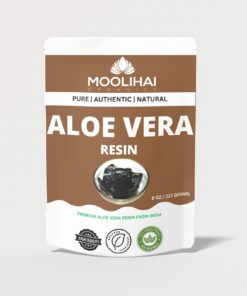


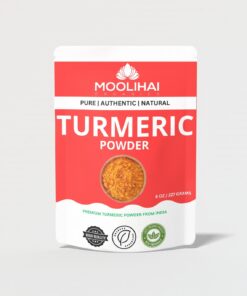
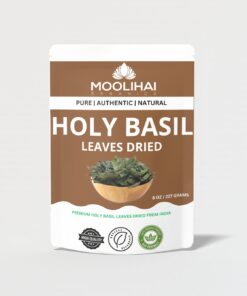

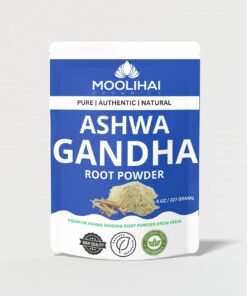
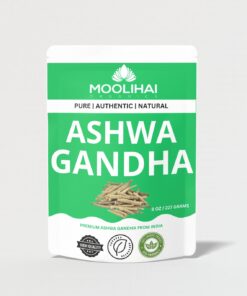
Ponnatharam Stone (Raw) | For Permanent Hair Removal
Vengai Paal | Black Bindi | Dhrishti Pottu | Vengai Pottu for Babies | 100% Natural
Dried Avaram Senna Flower / Cassia Senna Auriculata / Aavaram Poo / Tarwar / Amaltas Leaves / Senna Auriculata / Avaram Poo / Sanay / Alexandrina / Tanner’s Cassia flower
Natural Dried Moringa Flower – Moringa Oleifera – Drumstick Tree Flower – Murungai Poo – Munagaku Flower
Akasa Garudan Kilangu / Redfruit Creeper / Corallocarpus Epigaeus
Original Edible Camphor | Pacha Karpooram | Bhimseni Camphor
Saussurea Obvallata Seeds / Brahmakamal Seeds / Queen of the night / Sacred Saussurea Kon Kapfu / Brahma Kamalam / Nishagandha
Insulin Leaf Powder / Chamaecostus Cuspidatus / Costus Pictus / Spiral Ginger / Insulin Powder / Costus Igneus
Achu Pottu for Babies | Bindi Mould Set | Baby Seratta – 1 Set
Kaunch Beej Powder |Poonaikali | Velvet Bean Powder | Mucuna Pruriens | Kapikacchu | Natural Nervine Tonic & Muscle Builder
Aalam Pazham / Banyan Fruit Powder / Ficus Benghalensis / Marri Palu / Bargad / Dodda Alada Mara / Peraal / Vat Vriksha Powder
Traditional Vasambu Valayal for Babies | Calamus Bracelet | 100 % Pure & Natural